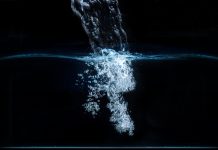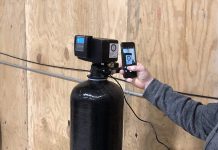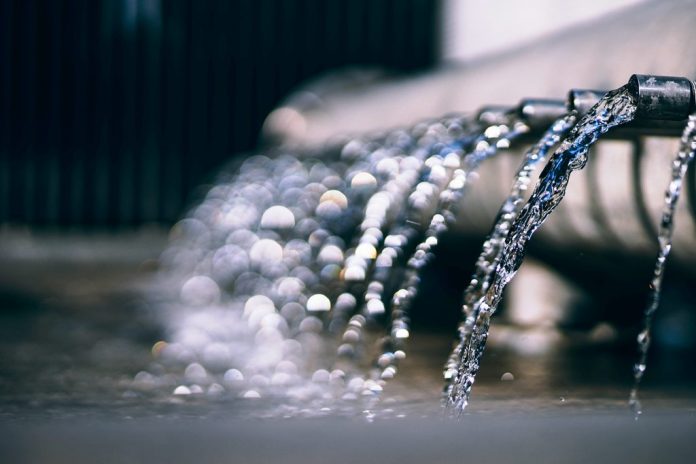
Featured Image by fancycrave.com via pexels.com
Whether you’re out in the wild or surviving a disaster, the importance of the right water purification methods cannot be overstated.
These days many people are used to drinking pre-purified water out of plastic bottles sold in stores.
While those are handy, the likelihood of finding a convenience store deep in the backcountry is pretty slim.
Therefore, you’ll need to know the best water purification methods to survive.
Why Water Purification Methods Are so Important
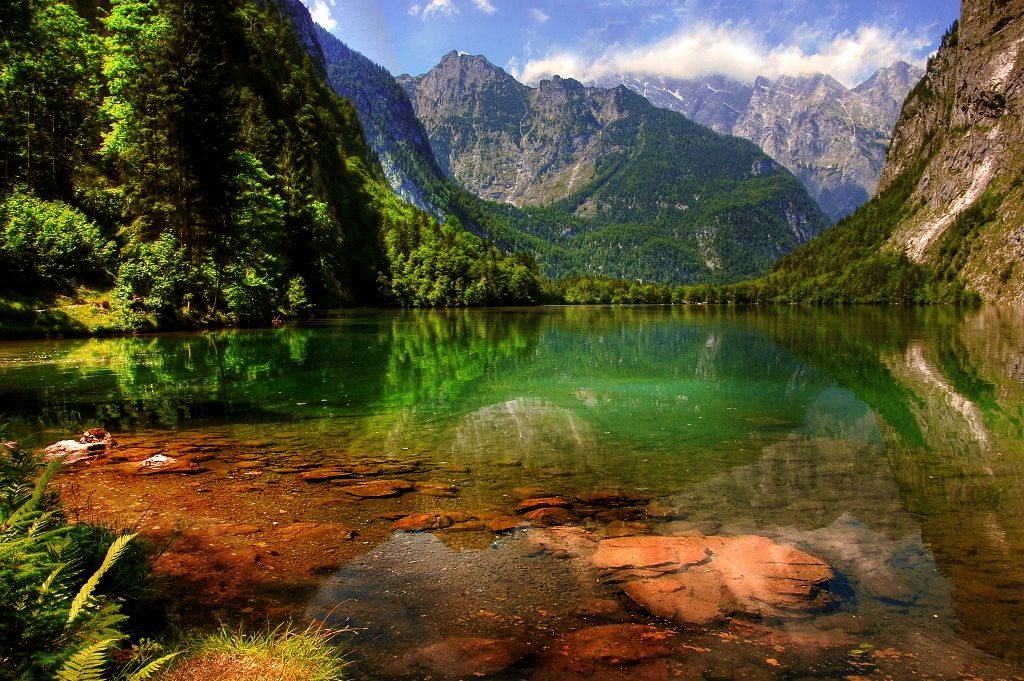
Image via Pexels
Perhaps you’ve seen Hollywood movies where the grizzly bearded outdoorsman or soldier survives by drinking water straight from a river or creek.
He dips into the stream with gnarled dirty hands and looks around suspiciously as he drinks.
First of all:
That guy’s an idiot.

Image via Giphy
Even the most pristine and unpolluted river or creek is teeming with microscopic contaminants that are more dangerous than any grizzly bear or enemy soldier.
Drinking water not treated by water purification methods is a sure ticket to a lot of pain, sickness, and even death.
Fun Fact:
Roughly 70 percent of planet Earth is covered in water. Only 2.5 percent of it is drinkable. Plus, only one percent of it is easily accessible, with the rest trapped in snowfields and glaciers.
In the wild, you’re probably drinking Bambi poop

Image via Giphy
Oh, come on.
What could be so wrong with drinking water that hundreds of animals probably drink every day?
Okay, first of all, would you drink out of a glass that hundreds of animals also drank from?
If not, then you have your answer.
Here is another question, though:
Would do you drink out of your toilet?

Image via Giphy
Most people don’t realize this, but animals in the wild also do their business in rivers and creeks.
Yes, those same sources of water that look so fresh and pure on postcards are filled with poop from animals (maybe even a few humans).
Also, there’s this:
Due to the size and solitude of many wilderness areas, it’s easy to forget that you’re not the only person to access a particular water source.
It’s almost a certainty that others have probably bathed, swam, washed dishes or clothes and done their business in the wild water source that you’re about to drink out of.
Water purification methods can ensure your drinking water is poop free.
Diseases, parasites, and infections, oh, my!
Maybe you’re wondering what’s the harm in drinking a little poop every now and again?
Okay, fair enough.
In that case:
Here are a few unwanted guests lurking in untreated water, just waiting for you to take a sip.
Oh, and by the way, there are a lot more.
Cholera
Cholera is a waterborne bacterial illness that impacts the intestine.
Sounds, fun!
Its symptoms include watery diarrhea and vomiting, which can cause dehydration and electrolyte imbalance.
According to a 2013 report by the Global Health Observatory of the World Health Organization (WHO), 47 countries reported 129,064 cases of cholera.
A total of 43 of this number came from Africa, while 47 percent came from the Americas.
Dysentery

Image via Giphy
Dysentery is perhaps one of the most common waterborne diseases out there.
It’s responsible for the deaths of over 600,000 children who’ve yet to reach the age of five who come mostly from developing countries.
Here’s why:
A microorganism called Shigella causes this bacterial disease, and just like the cholera bacterium, this little gut-wrecker attacks the cells of the large intestine.
Symptoms include abdominal cramps, anal pain, and bloody stool.
Fun Fact:
“About 6,800 gallons (25,700 liters) of water is required to grow a day’s food for a family of four.” — Espwaterproducts.com
Salmonella and E.coli

Image via Giphy
These two bacterial diseases have a lot in common.
Here’s what we found:
They both thrive in unsanitary conditions, such as filthy water containing feces.
Animals are known to spread salmonella through their feces.
A particular strain of the Escherichia coli can make toxins that cause illness.
Both of these water bacteria present similar symptoms in infected individuals: abdominal cramps, high fever, vomiting, and diarrhea.
In the worst cases of E. coli infection, people have experienced kidney failure.
Dracunculiasis
Dracunculiasis may sound like something out of Transylvania, but its nickname isn’t Dracula.
It’s actually known better as Guinea worm disease, based on the worm that causes it.
This disease is contracted when someone drinks water contaminated with this creature’s eggs, larvae, or both.
It gets better:
When the larvae grow up, they can develop up to a meter long.
Female worms can move through an infected person’s subcutaneous tissue and eventually emerge.
More often than not, they come out through the feet.
By that time a person will experience painful ulcers, fever, vomiting, and nausea.
Typhoid fever
Typhoid fever, made famous by the true story of Typhoid Mary.
Mary Mallon, known as Typhoid Mary, lived from 1869 to 1938.
She was an Irish-American cook who was the first person identified in the U.S. as an asymptomatic carrier of Typhoid fever.
Throughout her career as a cook, Mary is believed to have infected up to 51 people, three of whom died.
Typhoid fever is a bacteria similar to Salmonella typhi.
However, in addition to possible diarrhea, victims suffer from a severe skin rash with rose-colored spots on the chest and abdomen.
As with the case with Typhoid Mary, carriers of this illness can also be free from symptoms and go on to infect others who are not so lucky.
Check out this video:
Fun Fact:
Typhoid Mary infected people because she refused to wash her hands.
Botulism
The bacterium Clostridium botulinum is the culprit that creates the condition known as botulism.
The infections start with fatigue, problems with eyesight, and slurred speech, symptoms common with many water diseases.
That’s not the worst of it:
Eventually, it progresses to weakness in the facial muscles, which ultimately spreads to the arms and legs.
If it’s not treated immediately with antibiotics, an antitoxin, or both, the condition could lead to death as this little devil can affect the production of saliva and breathing.
Not a fun way to go for sure.
Fun Fact:
“To produce one chicken, we need 330 gallons of water.”
— Espwaterproducts.com
Severe Acute Respiratory Syndrome (SARS)
Recently discovered in 2003, Severe Acute Respiratory Syndrom (SARS) is a disease with no known cure.
The World Health Organization (WHO) declared SARS a global health threat due to its numerous recent outbreaks, mostly in places like Hong Kong and mainland China where the disease may have originated.
When SARS comes to the party, it enters the system through the fluids of an infected person.
One starts to develop flu-like symptoms until it advances into something that resembles pneumonia.
In the worst cases, this disease can result in death.
Polio
An oldie but goodie, the Poliovirus causes poliomyelitis, also known as Polio.
Thankfully, there is a vaccine to prevent the onset of this virus.
However, there are still cases of outbreaks where the virus has been reported in several developing countries.
The virus is usually spread through ingestion, where this micro-nasty has the power to produce dizziness, vomiting fever, and bowel and bladder dysfunction.
And that’s being polite:
The virus can also cause overall muscle weakness to paralysis, and at worst even death.
Alarming facts and statistics about waterborne diseases
The WHO and UNICEF Joint Monitoring Program published a report in 2017 about the progress of drinking water.
The report found that in 2015, 29 percent of the global population (roughly 2.1 billion people) lacked safely managed sources of drinking water.
Every year the lack of water purification methods leads to more than 3.4 million deaths from waterborne diseases, making it the leading cause of death and disease around the world.
Sadly, it’s much worse:
Most of those deaths are young children, about 4,000 per day.
From 2013 to 2014, in the United States, waterborne diseases caused 289 cases of sickness, 108 hospitalizations, and 17 deaths.
The 8 Different Water Purification Methods

Image via Giphy
There are several different water purification methods you can use to transform contaminated water into clean drinkable water.
Each method has its benefits and downsides.
Below a list of a few water purification methods along with their pros and cons.
Here’s what we found:
1. Boiling
Boiling is a tried and true method of purifying water.
It’s also the cheapest and safest way to go.
This is what you need to do:
To use this method effectively, water must be brought to a boil and left at a rolling boil for one to three minutes.
However, for people living in higher altitude areas, it’s recommended that they boil water longer.
This is because water boils at lower temperatures in higher altitudes.
Before drinking, boiled water should be covered and left to cool.
Water drawn from wells should be left to sit awhile to allow compounds to settle before you filter out the clean water for use.
|
Pros |
|---|
|
Kills bacteria, parasites, protozoa, and algae |
|
Destroys viruses |
|
Easy and simple |
|
Cons |
|---|
|
Doesn’t kill organic chemicals |
|
Does not eliminate inorganic chemicals |
|
Can’t eliminate radionuclides |
|
Requires some kind of fuel to produce heat |
|
Taste can be affected |
|
Risk of injury |
|
Time-consuming |
|
Water must cool before drinking |
2. Mechanical filters
Mechanical filters are physical mesh-type barriers that allow water to pass through while filtering larger contaminants in the water.
These filters are commonly used in aquariums to help improve water clarity and remove fish poop.
The pore size or space between media fibers are granules. They determine the size particles a filter can remove.
Mechanical filters remove elements such as clay, ferric iron, silt, and sand.
These filters can be made from materials such as carbon, nylon, ceramic, and plastic.
They also block some pathogens such as colloids (suspended matter), bacteria, and viruses.
People who draw their water from an underground well may use one or more mechanical filtration to filter water before it reaches a storage tank.
There are three types of mechanical filters:
- 1Cartridge sediment filters
- 2Medi
- 3Multimedia filters
Cartridge sediment drinking water filters
Cartridge sediment filters only remove suspended solids.
Manufacturers rate the filters according to the size of particles they remove.
The filter material is often corrugated or wound to provide the maximum surface area needed for filtration.
Cartridge sediment filters can treat either point-of-entry or point-of-use.

Image via Giphy
These filters include pleated paper, cotton, polyester, and polypropylene.
Pleated polyester and polypropylene are the most expensive but can be cleaned and reused several times.
These filters are used as pre-filters when unfiltered water could reduce the service life or effectiveness of another treatment device.
In other words:
They are used as the first line of defense.
|
Pros |
|---|
|
Removes larger particles such as suspended solids |
|
A good first line of defense |
|
Can be used as point-of-use or point-of-entry filter |
|
Some can be washed and reused |
|
Cons |
|---|
|
Not good for removing smaller pathogens like parasites, protozoa, algae, and bacteria |
|
Doesn’t work well against viruses |
|
Not effective against organic or inorganic chemicals |
|
Hydrogen sulfide must be oxidized into solid particles via ozonation or chlorination before cartridge sediment filter can remove it |
|
Decreases water flow when clogged |
|
Must be replaced or washed frequently |
|
Lowest flow rate |
Media drinking water filters
Media filters are made up of different components that include a filter medium, a tank, a support system, and an underdrain.
These are point-of-entry devices and used as pre-filters before suspended solids in untreated water can reduce the effectiveness or service life of the primary treatment device.
The filter medium generally measures between 24 and 36 inches deep. The medium can be materials such as aluminum silicate, silica sand, or anthracite.
The tank encloses the filter medium. The support system, typically gravel, prevents the medium from being washed out of the device. Water enters the filter tank through the top then percolates through the medium, which captures any suspended solids. Treated water exits the device via the underdrain.
These filters can be cleaned using a process called backwashing, which reverses the direction of water flow through the filter by forcing water from the bottom of the tank to the top.
The flow expands the media bed and washes any collected solids out of the filter.
Manufacturers leave directions on how often to backwash their devices.
|
Pros |
|---|
|
Can be cleaned and reused using backwashing. |
|
Generally offers a better flow rate than cartridge sediment filters |
|
Captures suspended solids |
|
A generally better first line of defense than cartridge sediment filters |
|
May require less frequent cleaning than cartridge sediment filters |
|
Removes iron, manganese, and hydrogen sulfide |
|
Cons |
|---|
|
Ineffective at filtering viruses |
|
Not as effective at filtering bacteria, parasites, protozoa, and algae |
|
May not filter all organic or inorganic chemicals |
|
Dissolved iron, manganese, and hydrogen sulfide must be oxidized into solid particles via ozonation or chlorination before media filter can remove them |
|
Requires cleaning |
|
Backwashing puts additional water into your septic system |
|
Backwashing also increases water consumption |
|
Can reduce water flow |
Fun Fact:
“90% of all Americans receive their drinking water from a public water supply.” — Espwaterproducts.com
Multimedia drinking water filters
These filters share the same construction as media filters, except the tank encloses three or four layers of different filtration media.
As with single layer media filters, multimedia filters can be backwashed and reused.
Multimedia filters are point-of-entry devices.
In a multimedia filter, the coarsest media layer is on the top.
Each successive lower layer is finer.
Here’s an example:
One multimedia filter may have plastic beads or bituminous coal on the top.
Then followed by layers of anthracite coal, then sand, then garnet.
Unlike single media filters that trap particles at the top, multimedia filters trap particles throughout the entire depth of the column.
|
Pros |
|---|
|
Can be cleaned and reused via backwashing |
|
Requires less frequent cleaning than media filters and cartridge sediment filters |
|
Typically offers a better flow rate than cartridge sediment and media filters |
|
Captures suspended solids |
|
Reduces water flow rate less than cartridge sediment filters |
|
A generally better first line of defense than cartridge sediment filters and media filters |
|
Removes iron, manganese, and hydrogen sulfide |
|
Cons |
|---|
|
Not effective at filtering viruses |
|
Also not 100 percent effective at filtering bacteria, parasites, protozoa, and algae |
|
May not filter all organic or inorganic chemicals unlike some other water purification methods |
|
Dissolved manganese, iron, and hydron sulfide must be oxidized into solid particles via ozonation or chlorination before media filter can remove it |
|
Requires cleaning |
|
Backwashing puts additional water into your septic system |
|
Furthermore, backwashing increases water consumption |
|
Can reduce water flow |
3. Activated carbon filters
These filters are a form of treated carbon that’s highly porous and have a large surface area, making it ideal for filtration.
The effectiveness of this filter depends on factors such as:
- The contact time between the filter and water
- Concentration of contaminants
- The filter bed depth
- Type of activated carbon installed
The most common types of carbon filtration systems are granular activated filters (GAC) and powdered block filters.
GAC is made from organic materials with high carbon properties such as lignite, wood, and coal.
The main difference between GAC and powdered block filters (PAC) are their particle sizes.
GAC filters larger particles and PAC filters smaller.
GAC can be used for post-filtration absorption where GAC is placed after the conventional filtration process.

Image via Giphy
It can also be used for filtration-absorption in which some or all the filter media contained in a granular media filter is replaced with GAC.
In post-filtration, the GAC contractor gets the highest quality water and therefore only has to remove dissolved organic compounds.
Backwashing GAC in this configuration may be unnecessary unless there’s excessive biological growth.
By allowing longer contact times than filter-absorbers, post-filtration also offers the most flexibility for handling GAC and designing specific absorption conditions.
|
Pros |
|---|
|
Improves the taste and odor of drinking water, unlike some other water purification methods |
|
Removes contaminants such as chlorine and Iodine residuals, detergents, and radon |
|
Filters some man-made chemicals such as pesticides |
|
Filters volatile organic chemicals (VOCs), which are usually plant-thinning products |
|
Can also remove heavy metals and lead (but must be a specific type of activated carbon filter) |
|
Cons |
|---|
|
Does not remove nitrates, sodium, fluoride, microbes, and water hardening compounds |
|
When clogged can drop water flow |
|
Even PAC filters offer no filtration against pathogens such as bacteria, parasites, algae, and protozoa |
|
Not effective at removing dissolved inorganic impurities |
|
Ineffective at removing metals such as salts, copper, minerals, and certain radionuclides |
|
Low flow rate with clogged filters |
|
Even PAC filters can’t remove viruses |
|
GAC filters can incur bacterial growth |
|
GAC filters require special disposal and can’t be regenerated by washing |
|
Water may pass through areas in the GAC that bypass the carbon in the charcoal filter |
Fun Fact:
“More than half of the water used in a home is used in the bathroom.” — Espwaterproducts.com
4. Distillation
No, we aren’t talking about the alcohol distillation process.

Image via Giphy
Distillation is a water purification method in which heat is used to produce pure water from vapor.
This method is effective because water has a lower boiling point than diseased elements and contaminants found in water.
During distillation, water is subjected to a heat source until it attains boiling point.
It’s left at boiling point until it vaporizes.
This vapor is directed into a condenser to cool.
While cooling, the vapor is reversed into liquid water that’s clean and safe for drinking.
Solar powered distillation filters use energy trapped in solar panels which are then converted to usable energy that distills water.
|
Pros |
|---|
|
Removes bacteria, germs, and salts |
|
Effective at filtering viruses |
|
Filters heavy metals such as lead, arsenic, and mercury |
|
Works well for raw untreated water |
|
Removes soluble minerals such as magnesium, calcium, and phosphorus that can harden water |
|
Filters some radionuclides |
|
Cons |
|---|
|
The process can not strip water of synthetic chemicals such as pesticides, herbicides, and chlorine solutions that have a lower point than water |
|
Distillation is a slow process |
|
Requires an energy source |
|
Only effective at treating small quantities of water |
|
Difficult to maintain at a constant temperature |
|
Can take gallons of dirty water to produce one gallon of clean water |
|
Strips natural trace elements from water which could make the water very acidic |
|
Some studies claim drinking distilled water can be harmful to the body |
|
Doesn’t make great tasting water |
|
Does not filter some radionuclides |
5. Reverse osmosis
Reverse osmosis uses a semi-permeable membrane containing tiny pores through which water can flow.
The small pores of this membrane restrict organic compounds that have a larger molecular composition than water.
|
Pros |
|---|
|
Restricts organic compounds such as salt and other natural minerals |
|
Filters bacteria and disease-causing pathogens |
|
Blocks viruses |
|
Filters inorganic compounds |
|
Filters some radionuclides |
|
Cons |
|---|
|
Ineffective against VOCs that are molecularly smaller than water such as herbicides, pesticides, and chlorine |
|
Removes healthy natural trace minerals |
|
Reverse osmosis treated water can be unhealthy for the body |
|
Strips water of good taste |
|
Wastes about three gallons of water for every one purified |
|
Incredibly slow compared to other water purification methods |
|
Doesn’t filter some radionuclides |
6. Chemicals
Chemicals are also used to treat water for consumption.
The most common chemicals used to treat water are chloramides, chlorine dioxide, and hydrogen peroxide.
That’s not all:
Chloramines (chlorine) is the most common way to purify drinking water and can be used in either tablet or liquid form.
Chlorine dioxide is a type of chlorine that’s also used to purify drinking water, but it’s much less commonly used.
Hydrogen peroxide is usually combined with an activator called formic acid.
|
Pros |
|---|
|
Kills bacteria, germs, and other pathogens |
|
Also kills viruses |
|
Cheap and effective |
|
Works fast |
|
Helps remove bad tastes and odors |
|
Controls growth of slime and algae in pipes and storage tanks |
|
Helps remove unwanted nitrogen compounds |
|
Cons |
|---|
|
Not good for people with thyroid conditions |
|
Must apply chlorine tablets in heated water 69-degrees Fahrenheit or higher |
|
Linked to increased risk of cancer over a lifetime exposure |
|
Does not kill Cryptosporidium, which killed over 100 people in Michigan in 1993 |
|
Can increase susceptibility to tuberculosis |
|
Can cause inflammation of mucous membranes of the nose |
|
Causes corrosion of the teeth |
One major problem with excess chlorine is that it can combine with organic material in water to create substances such as Trihalomethanes, which can cause liver, kidney, and nervous system damage.
Fun Fact:
“There are still an estimated 240,000 water main breaks per year in the United States, wasting over two trillion gallons of treated drinking water.” — Espwaterproducts.com
7. Ultraviolet (UV)
Ultraviolet (UV) water purification uses electromagnetic radiation to decontaminate drinking water.
Sounds cool, right?
The UV light is produced by using a germicidal or mercury vapor lamp with glass that grants optimal shortwave UV light a fully transparent surface that it can pass through.
The shortwave radiation then decontaminates the water.
|
Pros |
|---|
|
No chemicals |
|
Annihilates bacteria, germs, pathogens, and viruses |
|
Kills fungus |
|
Cons |
|---|
|
Only useful as secondary filtration, cannot filter large suspended solids |
|
Any color present in the water will hinder the UV radiation’s effectiveness |
|
More expensive |
|
Does not filter heavy metals |
|
Can miss some micro-organisms |
|
UV radiation does not stay in the water |
|
Water may require post chemical treatment |
8. Ion exchange
The water treatment process known as ion exchange is used for softening or demineralizing water.
Here’s what we found:
But, it can also remove other substances in water when used in processes such as deionization, dealkalization, and disinfection.
Ion exchange describes a particular chemical process in which unwanted dissolved ions are swapped for ions with a similar charge.
Ions are molecules or atoms containing a total number of electrons not equal to the total number of protons.

Image via Giphy
I know, science is rough.
Stay with me:
Cations are positively charged ions, and anions are negatively charged.
The principle behind ion exchange involves attraction.
Cations are attracted to cathodes, which are negatively charged electrodes by which electrons enter an electrical device.
While anions are attracted to anodes, electrodes that have a positive charge.
The ion exchange process involves a solid (either resin or zeolite) and a liquid (water).

Image via Giphy
In the process, the less desired compounds are exchanged for those considered more desirable.
These desired ions are loaded onto the resin material.
During the exchange of cations, positively charged ions that come into contact with the ion exchange resin are swapped with positively charged ions (usually sodium) available on the surface of the resin.
Likewise, the anion exchange involves negatively charged ions swapping out with negatively charged ions (usually chloride) on the resin surface.
This process also removes other contaminants that include fluoride, nitrates, sulfate, and arsenic.
Furthermore, there are specialized resins that can treat contaminants such as perchlorate and uranium.

Image via Giphy
Bottom line: the ion exchange method works.
|
Pros |
|---|
|
Treats inorganic chemicals |
|
Treats some radionuclides |
|
Cons |
|---|
|
Doesn’t treat bacteria, parasites, protozoa, and algae |
|
Not good for treating viruses |
|
Not effective against organic chemicals |
This water purification method is very effective in areas that use nuclear energy such as the Asian-Pacific region.
Finding Water Sources in the Wild
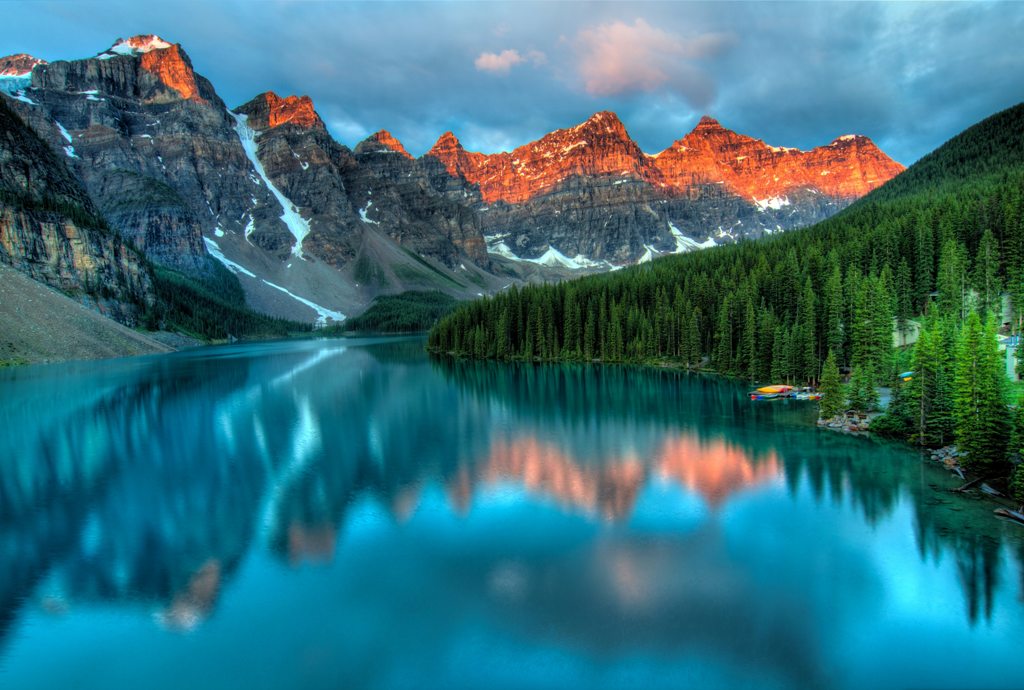
Image via Pexels
While it’s essential to use the right water purification methods to make water safe to drink, first you must be able to find it.
The most obvious sources of water in the wild are streams, rivers, and lakes.
However, there are also other methods you can employ to collect drinking water.
Once again keep in mind:
You’ll need to apply at least one of the many water purification methods before you can drink the water you collect.
7 ways you can collect water in the wild
Below we have listed some of the ways you can collect the water you need to survive while in the wild.
Check them out:
1. Collect rainwater
One of the easiest and safest ways to collect drinking water is by collecting rainwater.
Rainwater has almost zero risks of giving you a waterborne infection.
However, keep in mind:
Your collection container would need to be sterile. Otherwise, you can still catch an infection.
Also, in urban areas, rain must travel through a wide variety of pollutants that you definitely don’t want to chug down.
There are two primary ways you can collect rainwater.
- 1One way is to use a container.
- 2Another way is to tie the corners of a makeshift tarp around the trees a few feet off the ground.
For method two, place a small rock in the center to create a depression, and let the water collect.
You can also place a container under the tarp to catch any water that leaks through.
If you use either of these methods, don’t forget to use a water purification method before drinking.
Fun Fact:
“Most of the earth’s surface water is permanently frozen or salty.” — Espwaterproducts.com
2. Fruits and vegetation
Plants such as fruits, vegetables, cacti, fleshy-pulpy plants, and even roots contain a lot of water.

Image via Giphy
To collect water from any of these sources simply collect the plants and place them in some kind of container.
Now the fun part.
Go full-caveman (or woman) and mash them into a pulp with a rock to collect their fluid.
It won’t be much, but in desperate situations, even a little is a lot.
The method works well in tropical environments where vegetation and fruits are abundant.
Coconuts are an especially excellent source of hydration.
Unripe, green coconuts are better.
Take note:
The milk from ripe coconuts acts as a laxative, which will only serve to dehydrate you further.
3. Collect plant transpiration
Another simple option for water collection is taking advantage of plant transpiration.
Plants sweat fluid when moisture from the plant’s roots is carried to its leaves.
From there it usually evaporates into the atmosphere.
But you can catch the water before that happens.
To get started, first thing in the morning, tie a bag or something you can use for one (the larger, the better) around a leafy green shrub or branch.
Then place a rock in the bag to weigh it down a bit so the water will have a cavity to collect.
Thought the day, the plant will transpire and its moisture will collect in the bag rather than evaporate into the atmosphere.
Keep in mind:
Make sure you’re not doing this with a poisonous plant or else prepare to drink some pain.
4. Tree crotches and rock crevices
The crotches of tree limbs or crevices within rocks can be small collecting places for water.
In arid areas, such as deserts, look for bird droppings around a rock crevice which can indicate the presence of water inside, even if it’s unseen.
To remove the water from cracks, crevices, and crotches, just sink a piece of cloth into the area.
Let the cloth soak up any moisture and wring it out into a container.
You can repeat this process as many times as needed, but keep in mind it’s likely to be a tiny bit of water.
5. Dig an underground still
One method, which is also found in a U.S. Army manual, is to dig an underground still.
The benefit of this method is that it provides a more reliable, and fairly substantial, source of water compared to some other techniques.
Plus, you’ll be able to measure roughly how much you can expect, which helps with planning and rationing.
There are also above-ground varieties of sills.
The underground is your best bet for collecting the most water.
But, there’s no reason you can’t use both if you have enough material or can’t dig a large hole.
Here are the supplies you’ll need:
- Container (the biggest you’ve got)
- Clear plastic sheeting
- Digging tool
- Rocks
- Optional: something to use as a drinking straw such as bamboo or some other plant)
Instructions
- 1Find an area that collects a lot of sunlight during the day.
- 2Dig a bowl-like pit about three inches wide by two inches deep.
- 3Dig an additional small hole at the bottom of the pit for your container.
- 4Place your container in the pit (if you have a tube you can run it out of the container).
- 5You can also line the pit with vegetation to help capture more moisture.
- 6Cover the hole with plastic using rocks and soil to keep it in place.
- 7Put a small stone in the center of your sheet, so that it hangs and creates an inverted cone over the container.
- 8Collect your water from the container; you can also drink it from your straw or store it in another container for later use.
There’s almost always moisture in the ground at that depth, that reacts to the sun’s heat to produce condensation.
The inverted cone forces the condensation down from the plastic sheet into your container.
Using this method you can expect anywhere from half to a full liter of water per day.
With that in mind:
You’ll need more than one or another source of water for an entire day’s supply.
Fun Fact:
“A person can live about a month without food, but only about a week without water.” — Espwaterproducts.com
6. Melt snow and ice

Image via Giphy
This technique is especially useful in mountainous areas where snow and ice are more abundant well into the summer and sometimes year round.
If you’re near or on the ocean in a polar region, look for icebergs for a source of fresh water.
You can also find fresh water in “old ice” that has been through rain and thaws.
Keep in mind:
This is different from salty ice, which is opaque and gray, freshwater ice has a bluish color and crystalline form.
Fresh ice water also splinters easily with a knife.
If you’re in a boat surrounded by salt water, you can collect some in a container and allow it to freeze.
Fresh water will freeze first, while the salt will accumulate as slush in the middle.
Simply remove the ice and discard the slush.
While ice and snow are great sources of water, it should always be melted and purified before drinking.
Also, eating snow and ice will lower your body temperature. This causes dehydration caused by the need for your metabolic rate to speed up so your body can remain warm.
The best way to melt snow and ice and make it taste good is to mix it with all the water you already have available, even in small amounts.
Then just slosh it around until the snow or ice melts.
If you’re using fire to heat it in a container, add a bit of other water to it.
Otherwise, heating snow or ice directly can burn it and produce a foul tasting drink.
Well, just dig a well
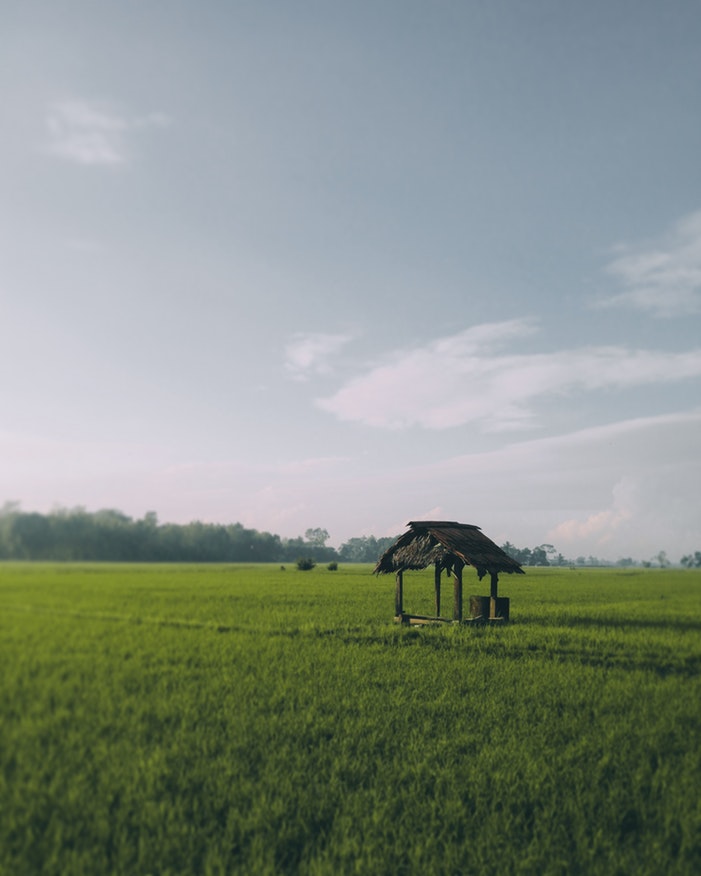
Source: UnSplash
To dig a well, start digging.
The best places are anywhere you see dampness on the ground or green vegetation.
Dig a hole a few feet deep, and it’s likely you’ll start seeing water seeping in.
You can also do this at the feet of cliffs, in a dry river bed, in valleys and low areas.
Additionally, you can dig behind the first depression behind the first sand dune of a dry desert lake.
This method isn’t always a guarantee and the water, if any, will be coarse and very muddy.
Which is why you’ll need to employ one of many water purification methods before you can drink it.
Fun Fact:
“An acre of corn will give off 4,000 gallons (15,000 liters) of water per day in evaporation.”~Espwaterproducts.com
Do not try to drink “water substitutes”
This is a terrible idea that should be avoided in all but the direst circumstances.
Generally, non-water substitutes only make things worse for your health and vitality.
These substitutes have a few harmful side effects.
Here’s a list of common substitutes and their adverse effects.
- Alcohol: Getting your buzz on will cause dehydration and clouds better judgment
- Blood: Fangs back, Dracula, this substitute can transmit disease and has a very high salt content (which means more dehydration)
- Saltwater and sea ice: These contain about four percent salt and it takes your body more water to get rid of waste from seawater than you get from it
- Urine: Despite the manly myth behind drinking your own urine, this yellow water substitute contains harmful body waste and about two percent salt
In any desperate survival situation, you may find yourself tempted to try ingesting non-water liquids as a way to stay alive.
Also, keep this in mind when it comes to urine:
Urine is about 95 percent water, but the other five percent are waste products that can cause kidney failure if ingested for more than a short period.
Okay, there’s always that person in the crowd who’s like:
“Yeah, but what if you’ve got no other choice?”
Well, let’s put it this way:
If you’ve got no other choice but to drink your own urine, then you’re probably going to die anyway.
With that in mind:
Do you really want to spend your final moments tasting your own pee?
And on that note, we hope you’ve enjoyed reading about water purification methods.
Remember always to purify your water to stay safe and healthy.

Image via Giphy
Featured image via Pexels.


